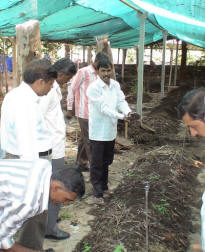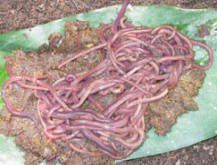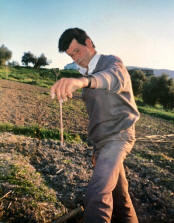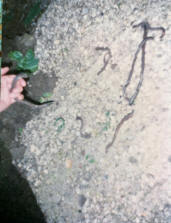|
Earthworms improve biological, chemical, and physical properties of soil:
Biological
Earthworms digest all different kinds of organic plant material and break it down to nutrient-rich humus. Also the population of beneficial microbes is increased and the microbial activity is stimulated.
Chemical
An earthworm consumes minute soil particles which are broken down and then excreted in the form of casts. According to information from IFOAM, these casts contain five times more nitrogen, seven times more phosphorus, eleven times more potassium, and two times more calcium and magnesium than soil without earthworm population. Also trace elements become more available to plants by earthworm activities.
Physical
Earthworms improve the structure of soil in several ways:
– They create tunnels deep into the soil (which last much longer than the earthworm lives). These tunnels allow water to penetrate deeper into the soil. Thus water holding capacity of soil increases.
– They break down clumps of soil by eating through these clumps.
– The earthworms’ cast (the worms’ excretion) helps to create stable soil aggregates.
– They help undoing the effects of soil compaction.
All this shows that earthworms are really very valuable farmer’s friends. Shree Vasant remarked once, "They work night and day and do not form laborers’ unions’ to charge higher salary. They do their job for free."
Impact of conventional (chemical) farming
But now this job is getting more and more threatened – not by strikes but by methods of conventional farming. Problems are ploughing and tilling as well as use of pesticides and chemical fertilizers.
Studies showed that some pesticides are lethal to earthworms even at levels much lower than the recommended agricultural doses. But even if not lethal these pesticides and chemical fertilizers have a devastating effect on earthworms. Their size is reduced (and therefore they convert less organic matter into useful humus), and also their reproduction is happening at lower speed therefore the numbers of earthworms in the soil will be less. That can be easily seen on fields where conventional farming is applied. As a consequence soil health degenerates.
(For more info see e.g.
www.sciencedaily.com/releases/2014/03/140325113232.htm ) |




